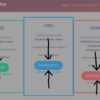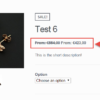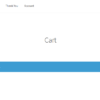
WordPress is the leading content management system CMS platform extensively used in different types of websites worldwide. Effective development and customization of themes and APIs through numerous front-end frameworks like jQuery, Node.JS, ReactJS, Bootstrap, and AngularJS frameworks with the help of different front-end and AngularJS developers make them the best frameworks for WordPress CMS.
The global market size of CMS is projected to reach $123.5 billion by 2026 from just $35.9 billion in 2019 with a whopping growth of over 16.7% CAGR with a leading share of WordPress CMS, according to the Zion Market Research forecast.
How Popular Is WordPress?
WordPress is continuously maintaining a high level of popularity in the CMS marketplace, which generates a substantial demand for WordPress development. WordPress powered more than 37.7% of all websites worldwide and more than 63.3% of the websites that use CMS platforms. WordPress is powered by a huge library of plugins and a large number of customizable themes make it the most prevalent platform.
A huge ratio of the increased demand for AngularJS service, Node.JS developers, and front-end developers are triggered by the WordPress API development. On average, more than 600 websites are created with WordPress daily. It is getting extensively popular in the field of eCommerce powered by the WooCommerce and Shopify eCommerce tools.
The continually increasing demand for the popular JavaScript frameworks like AngularJS, Vue.JS, and others in the field of WordPress development, the AngularJS developers salary has skyrocketed in the global market. The average salary of an AngularJS developer with front-end development skills is about $108,302 per annum.
Modern WordPress Development Workflow
The modern workflow of WordPress development is devised to achieve the cleanness, readability, modularity, reusability, and maintainability so that a complex and bulky WordPress code can be easily managed, troubleshoot, and reused efficiently. To achieve this objective, the most effective WordPress development workflow is adopted. There is no standard step-by-step development workflow, but still, it can be segmented into a few major activities as listed below.
- WordPress installation – The first activity of the WordPress development project starts with the installation and configuration of the WordPress CMS platform with the most desired configuration for the project.
- Adding a version control system – WordPress coding may become so bulky and messy if the project is not controlled properly through an automated version controlling system. One of the most popular version control systems for WordPress development is Git.
- Separate environments for development phases – WordPress development should be divided into three major environments commonly referred to as Local, Staging, and Production. Firstly, development, updates, and modifications should be developed locally. In the second step, the testing of the code, releases, updates should be done through different automated tools in the staging environment. Finally, the code should be deployed to the website for client access.
- Working with WP-CLI – WordPress CLI command-line is the most reliable and powerful way for WordPress development and management. Always prefer it for downloading core plugins or themes for your WordPress project.
- Continuous code testing – Continuous testing has become a core component in modern software development. Always use testing tools for WordPress development. You can also use a linting tool for the correction of the code errors.
- Use the latest coding tools – It is highly recommended to use modern tools like ECMAScript6+, Sass stylesheet, webpack, and others, which provide a greater level of coding automation from different perspectives.
Which WordPress Frontend Framework?
WordPress supports numerous JavaScript, PHP, and other frameworks for front-end and back-end applications. As far as the front-end platforms for developing APIs, plugins, and themes are concerned, AngularJS, Vue JS, Bootstrap, and React JS are a few very important to note. Let’s talk about a few very important front-end frameworks that are great in WordPress development.
- Vue JS framework – It is a very popular JavaScript framework, which is extensively used in the modern front-end development on the WordPress platform. It helps you develop very powerful and interactive web interfaces. It supports virtual DOM, effective data binding, great animation, and transition. Vue JS platform front-end code can easily be deployed on WordPress to create a great user experience.
- Angular JS framework – Angular JS is a very powerful JavaScript platform for developing Restful APIs on the WordPress CMS platform. It offers a huge library of functions and supports numerous features. A few important features supported by the Angular JS framework include DOM decoupling, Model-View-Controller MVC, POJO model, single page application routing, two-way data binding, and many others. Angular JS is developed and powered by Google Inc.
- Bootstrap CSS platform – Bootstrap is a very popular framework for stylesheet designing extensively used for interactive and responsive websites. It is extensively used for front-end development on WordPress websites. Bootstrap supports both LESS and CSS files, HTML, JavaScript extensions, SASS stylesheet, and a wide range of components like dropdown menu, badge alerts, buttons, and others. A large number of templates are also available for customized use.
Final Takeaway
WordPress has been the king of all other CMS platforms in the global marketplace for over a decade now. It is growing substantially in blogging, media, and eCommerce domains. A proper workflow in modern WordPress development improves the effectiveness of WordPress. Vue JS, Angular JS, and bootstrap are a few major frameworks that work well with the WordPress platform.





